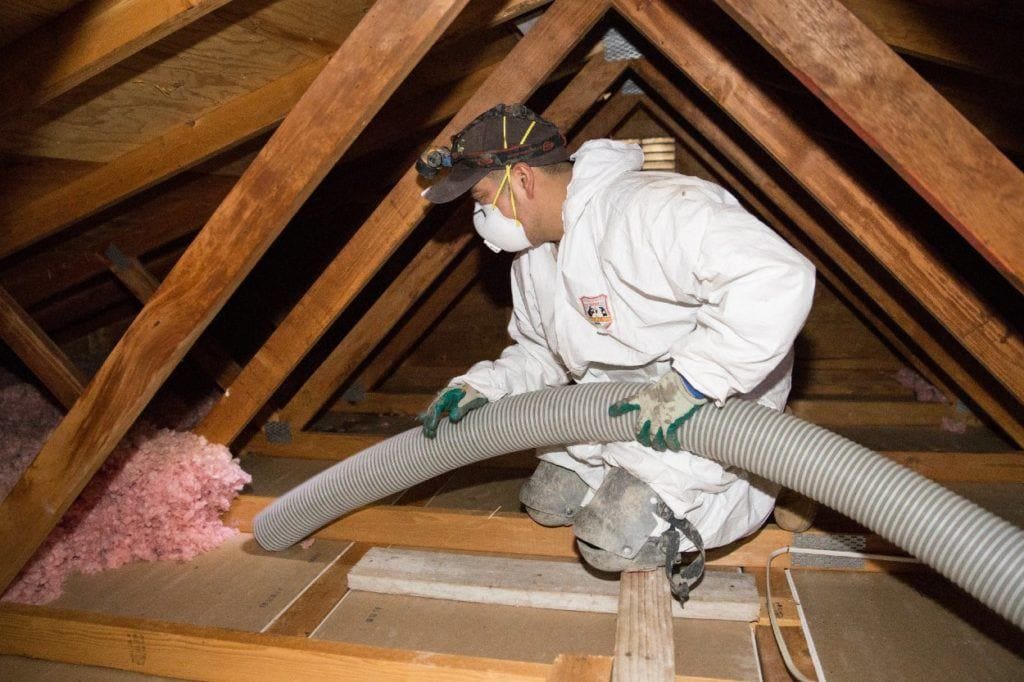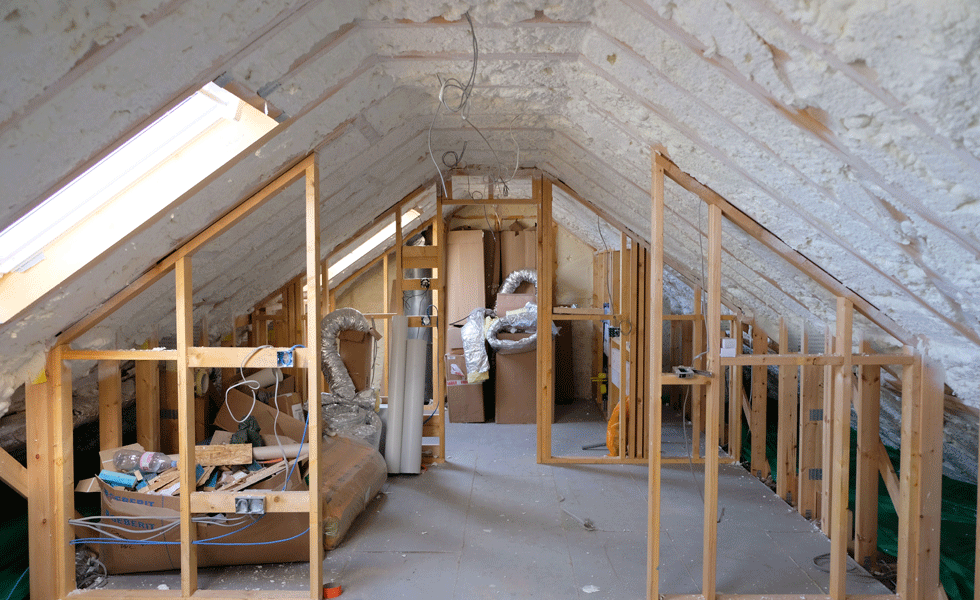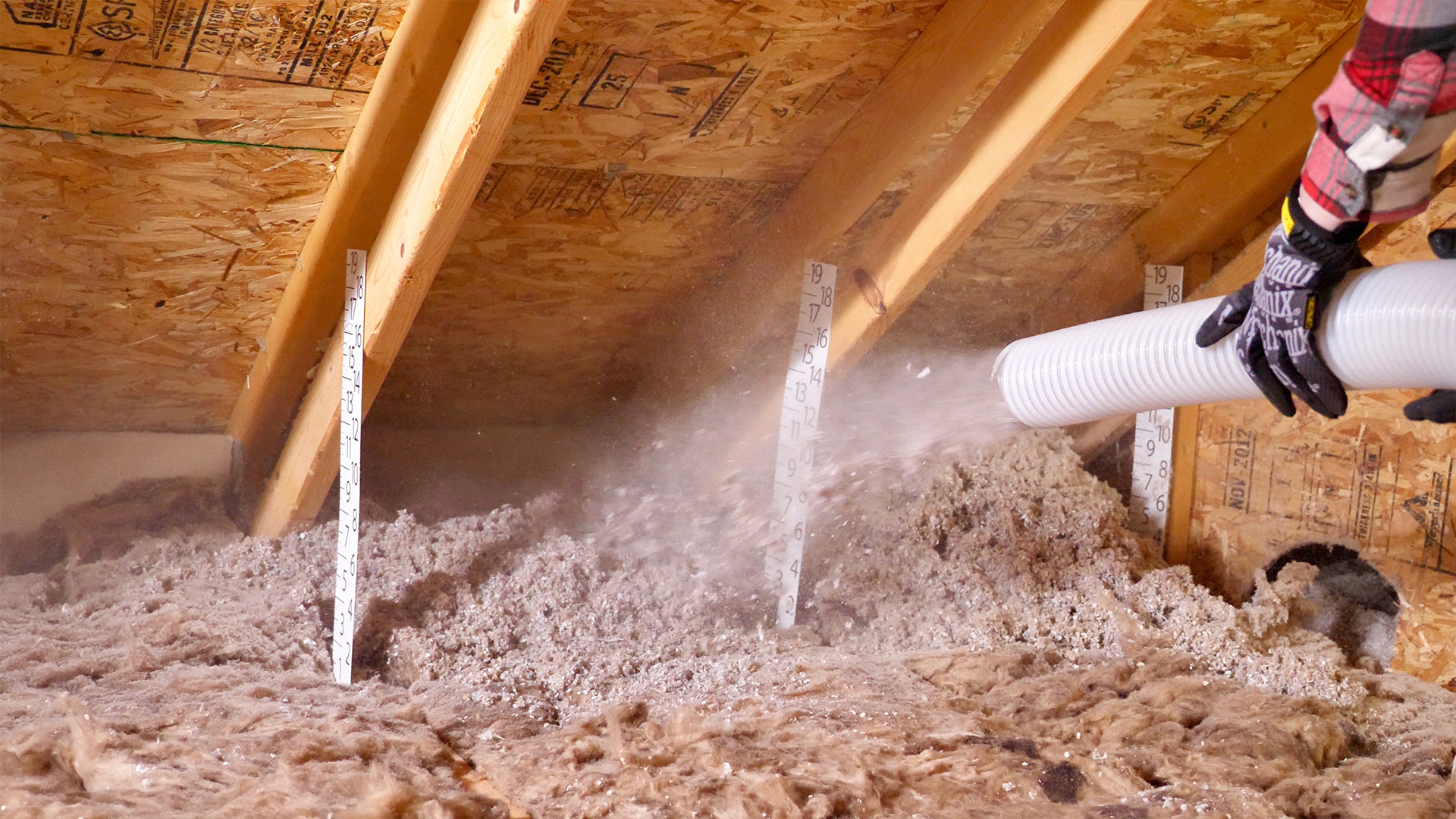Discover the Various Kinds of Attic Insulation and Their One-of-a-kind Advantages for Your Home's Energy Performance

Fiberglass Insulation
Fiberglass insulation is one of the most typically utilized products for attic insulation as a result of its excellent thermal efficiency and cost-effectiveness. Composed of tiny glass fibers, this material efficiently catches air, creating an insulating barrier that aids keep regular interior temperature levels. Its high R-value per inch makes it particularly effective at standing up to warm transfer, which is vital for power conservation in homes.
Installment of fiberglass insulation is fairly uncomplicated, usually available in batts or loose-fill types, fitting numerous attic setups. Furthermore, it is non-combustible and resistant to moisture, reducing the threat of mold advancement. This longevity adds to its longevity, making fiberglass a sensible long-lasting financial investment for property owners.
Furthermore, fiberglass insulation is usually made from recycled products, which boosts its eco-friendliness. The material can likewise add to soundproofing, lessening noise transfer in between areas. While it is vital to put on safety gear throughout installation to stay clear of irritability from the fibers, the total benefits of fiberglass insulation, including power cost savings and environmental considerations, make it a preferred option for improving attic efficiency and advertising a comfortable living setting.
Spray Foam Insulation
Spray foam insulation is a highly reliable option for attic insulation, recognized for its remarkable air securing and thermal performance. This innovative insulation product is made up of a combination of isocyanate and polyol resin, which, when combined, expands quickly to fill spaces and cavities in the attic room room. Its capability to comply with numerous surface areas guarantees a continual barrier versus air leaks, dramatically minimizing warm loss throughout cooler months and warm gain during warmer seasons.
Among the key benefits of spray foam insulation is its high R-value per inch, which implies it gives excellent thermal resistance in a reasonably slim application. This is specifically helpful in attic rooms where space is commonly minimal. In addition, spray foam can assist minimize dampness accumulation, reducing the threat of mold and mold development, which can be harmful to both the framework and indoor air top quality.
While the preliminary cost of spray foam insulation might be greater than conventional alternatives, its lasting power cost savings, combined with enhanced convenience and improved home value, make it a beneficial investment for house owners looking for enhanced power effectiveness. Attic Insulation DFW. Generally, spray foam insulation attracts attention as a reliable service for enhancing attic room insulation
Cellulose Insulation

Cellulose insulation is a preferred selection for attic room insulation, mostly composed of recycled paper items treated with fire resistants. This eco-friendly option is recognized for its exceptional thermal efficiency, successfully look these up decreasing warmth transfer in both summertime and cold weather. The dense structure of cellulose allows it to load voids and gaps in attic areas, offering a seamless barrier against air leakages.
Among the substantial benefits of cellulose insulation is its capacity to resist mold and mildew and insects, owing to the fire retardant treatments made use of throughout manufacturing. Additionally, it flaunts a high R-value per inch, which converts into premium energy efficiency. Home owners can expect lower cooling and heating prices as an outcome of improved insulation.
Installation is generally achieved through blowing loose cellulose right into the desired area, permitting a reliable and quick process. This technique likewise decreases interruption to the existing framework. Cellulose insulation has a reasonably reduced ecological impact, as its manufacturing procedure uses recycled products, contributing to lasting structure techniques.
Rock Woollen Insulation
Among the numerous alternatives for attic room insulation, rock woollen, likewise referred to as mineral wool, sticks out as a result of its outstanding thermal and acoustic efficiency. Made from all-natural or recycled materials, rock wool is developed by thawing rock and rotating it right into fibers, leading to a product that provides superb insulation residential properties.
Among the significant advantages of rock wool insulation is its high R-value, which indicates its effectiveness in withstanding warmth circulation. This particular not only improves power efficiency yet additionally contributes to maintaining a comfortable interior temperature year-round. Additionally, rock wool is inherently fire-resistant, making it a much safer alternative for homes as it can stand up to heats without melting or releasing poisonous fumes.
In addition, rock woollen insulation excels in soundproofing capacities, effectively decreasing noise transmission in between spaces and from outdoors sources. Overall, rock wool insulation supplies an extensive remedy for improving energy performance, safety, and comfort in property settings.
Glowing Obstacle Insulation
Radiant barrier insulation functions as a reliable service for reducing warmth transfer in attics, particularly in warmer environments. This kind of insulation jobs by showing radiant warm far from living rooms, therefore decreasing the quantity of warm that gets in a home during heat - Attic Insulation DFW. Normally made up of a highly reflective material, such as aluminum foil, radiant barriers are installed in attic rooms, encountering the roof, where they can look what i found intercept incoming warmth from the sunlight
The key advantage of glowing barrier insulation is its capability to lower cooling costs. By reflecting warm rather than absorbing it, radiant barriers can assist keep an extra steady interior temperature, lowering the work on cooling systems. This performance converts right into lower power costs and raised convenience for homeowners.
In addition to power financial savings, glowing barriers can additionally contribute to improved indoor air high quality. By lowering warmth buildup, they aid reduce moisture levels, which can stop mold and mildew growth and enhance total air flow. When set up correctly, glowing obstacle insulation can be a vital addition to any energy-efficient home, making it a worthy factor to consider for house owners wanting to enhance their attic room insulation method.
Final Thought
In final thought, understanding the different kinds of attic insulation-- fiberglass, spray foam, cellulose, rock woollen, and radiant barriers-- enables property owners to make educated choices relating to energy efficiency. By picking the appropriate insulation product, significant reductions in power costs can be achieved, along with enhancements in indoor convenience.

In final thought, recognizing the different look at here types of attic room insulation-- fiberglass, spray foam, cellulose, rock wool, and radiant barriers-- makes it possible for house owners to make informed choices regarding power efficiency.